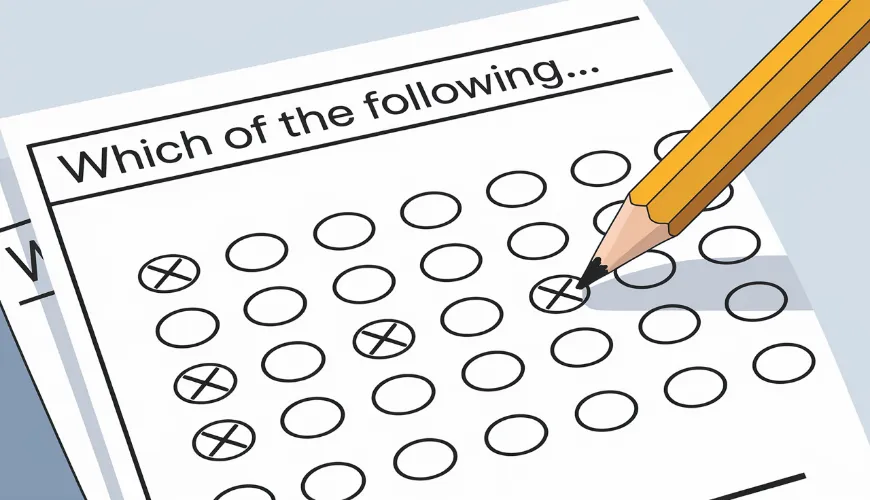Which of the Following or Which of the Followings Is Correct?

In the world of English grammar, few phrases cause as much quiet confusion as “which of the following” versus “which of the followings.” You’ll often see one of these in test questions, academic writing, and business reports-but is one of them actually wrong?
The short answer is yes: “which of the following” is grammatically correct, while “which of the followings” is not standard English and should be avoided. But understanding why, and how to use this phrase properly, requires a closer look at grammar, context, and real-world usage. Let’s break it down.
Why “Which of the Following” Is Correct
The phrase “which of the following” is a common construction in English, especially in formal contexts such as education, surveys, and assessments. It introduces a selection from a group and is typically followed by options or statements.
For example:
- Which of the following statements is true?
- Which of the following best explains the results of the study?
In both examples, “the following” acts as a noun phrase referring to the list of items that comes after the question. The important point to note here is that “following” in this context is not a plural noun, but rather an adjective used substantively (as a noun). In English, adjectives don’t change form to reflect plurals, and “the following” remains the same whether it refers to one item or many.
So, even if you're referring to multiple items (e.g. a list of four possible answers), the phrase remains “which of the following”, not “followings.”
Why “Which of the Followings” Is Incorrect
The word “followings” does exist in English, but it's rarely used-and almost never in the way non-native speakers might expect.
Here’s the key: while “followings” is technically a plural noun, it typically refers to groups of supporters or groups of people who follow something or someone. For instance:
- The author has several strong followings in different countries.
- Different social media platforms have their own unique followings.
In these cases, “followings” is used much like “audiences” or “fan bases.” But this is entirely unrelated to the construction “which of the following,” which is why the phrase “which of the followings” doesn’t make grammatical sense when referring to a list of options.
Using “followings” instead of “following” is a grammatical error often made by learners of English, particularly when translating directly from languages where plural forms are used differently.
Real-World Examples to Illustrate the Difference
Consider this question on a standardized test:
Which of the following is a renewable source of energy?
A. Coal
B. Natural Gas
C. Solar Energy
D. None of the above
Here, “the following” refers to the list of options (A through D), and “which” is asking for one or more items from that group. The correct structure is singular: “which of the following.”
Now imagine someone mistakenly wrote:
Which of the followings is a renewable source of energy?
This would instantly sound awkward to a native speaker, and grammatically it’s incorrect because “followings” implies plural groups of followers, not answer choices. The meaning gets muddled, even if readers can guess what the writer intended.
In professional or academic contexts, such mistakes can impact credibility. That’s why mastering this small but important distinction helps in both writing and editing.
The Grammar Behind “Which of the Following”
Let’s unpack the grammar a bit more. The structure is:
- Which – an interrogative pronoun, asking for specific information.
- of the following – a prepositional phrase describing the set we're choosing from.
The word “following” in this phrase is a participial adjective derived from the verb “to follow.” When used substantively (as in “the following”), it functions similarly to a noun, but it doesn't take a plural form.
This is a bit unusual when compared to regular nouns. For example, you might say:
- “Which of the books is your favorite?”
- “Which of the movies did you like best?”
But in the case of “following,” the adjective-turned-noun doesn’t change form, even when it refers to plural items.
Common Mistakes and How to Avoid Them
The error “which of the followings” commonly appears in writing by non-native English speakers, especially those used to languages that pluralize differently. It also shows up in automated translations or poorly edited educational material.
To avoid this mistake:
- Always use “which of the following,” never “which of the followings.”
- Think of “the following” as a fixed phrase that introduces a list-it doesn’t need to be pluralized.
- If in doubt, substitute “the following” with “these options” and check if the sentence still sounds right.
Example:
- ✅ Which of these options is correct? → Which of the following is correct?
- ❌ Which of these options is correct? → Which of the followings is correct? (Incorrect)
A Real-World Application
Consider a software developer writing documentation for their product. They might include a multiple-choice question to guide users through a process, such as:
“Which of the following SMTP testing tools provides real-time logs?”
If they mistakenly wrote “which of the followings,” it might confuse international users or diminish the professionalism of the documentation. This kind of subtle grammatical precision is especially important in technical writing, marketing material, and educational content.
How This Connects to Broader Language Skills
Understanding small details like this can have a big impact. For students preparing for standardized tests like the SAT, TOEFL, or GRE, correct grammar is essential. Likewise, businesses creating professional content-from product guides to bulk email campaigns-should ensure clarity and accuracy in every phrase.
In email marketing, for instance, clear language can reduce misunderstandings and even help with spam prevention. Confusing or ungrammatical subject lines and body text can raise red flags with spam filters, affecting your email deliverability and sender reputation. Tools like SendBridge help ensure your email verification is accurate, but strong grammar is part of maintaining a clean and professional message.
When Variation Is Acceptable
While “which of the following” is the standard construction, there are situations where different but related phrases may be appropriate. For example:
- “Which items on the following list are correct?”
- “From the following options, which do you choose?”
These variations are grammatically sound but structurally different. They avoid the fixed phrase “which of the following” while still referring to items on a list. However, even in these cases, the word “following” remains singular and unpluralized.
Clarity Over Complexity
English is full of quirks and exceptions, and the difference between “which of the following” and “which of the followings” might feel minor at first. But language is about clarity, and small errors can lead to confusion or misinterpretation.
In formal writing, educational materials, or digital content like email marketing automation, word choice matters. Whether you're crafting a survey, designing bulk email campaigns, or preparing SMTP testing documentation, using the correct form-“which of the following”-ensures that your readers understand your message clearly and confidently.
And as the linguist Steven Pinker notes, “Good writing serves the reader, not the writer.”Choosing the right words is part of that service. So the next time you find yourself asking a question from a list, remember: “which of the following” is always the right call.




